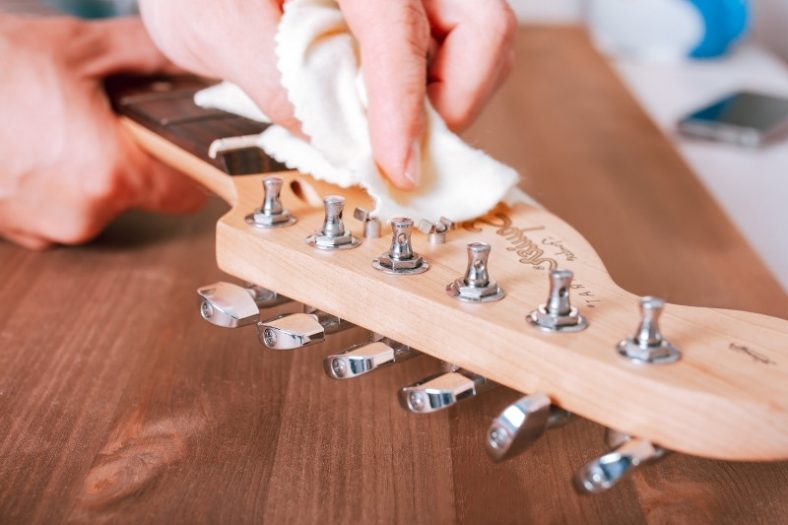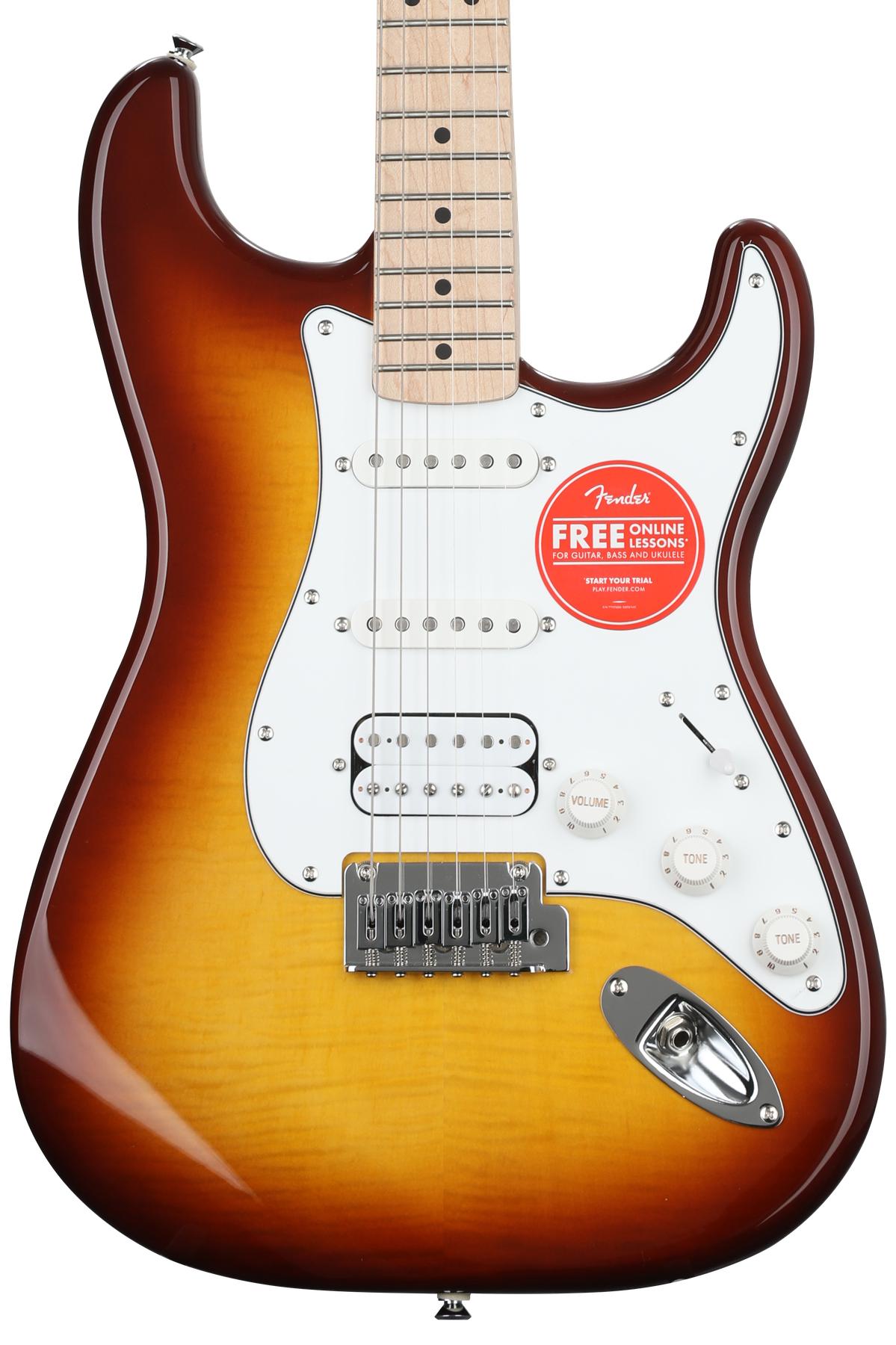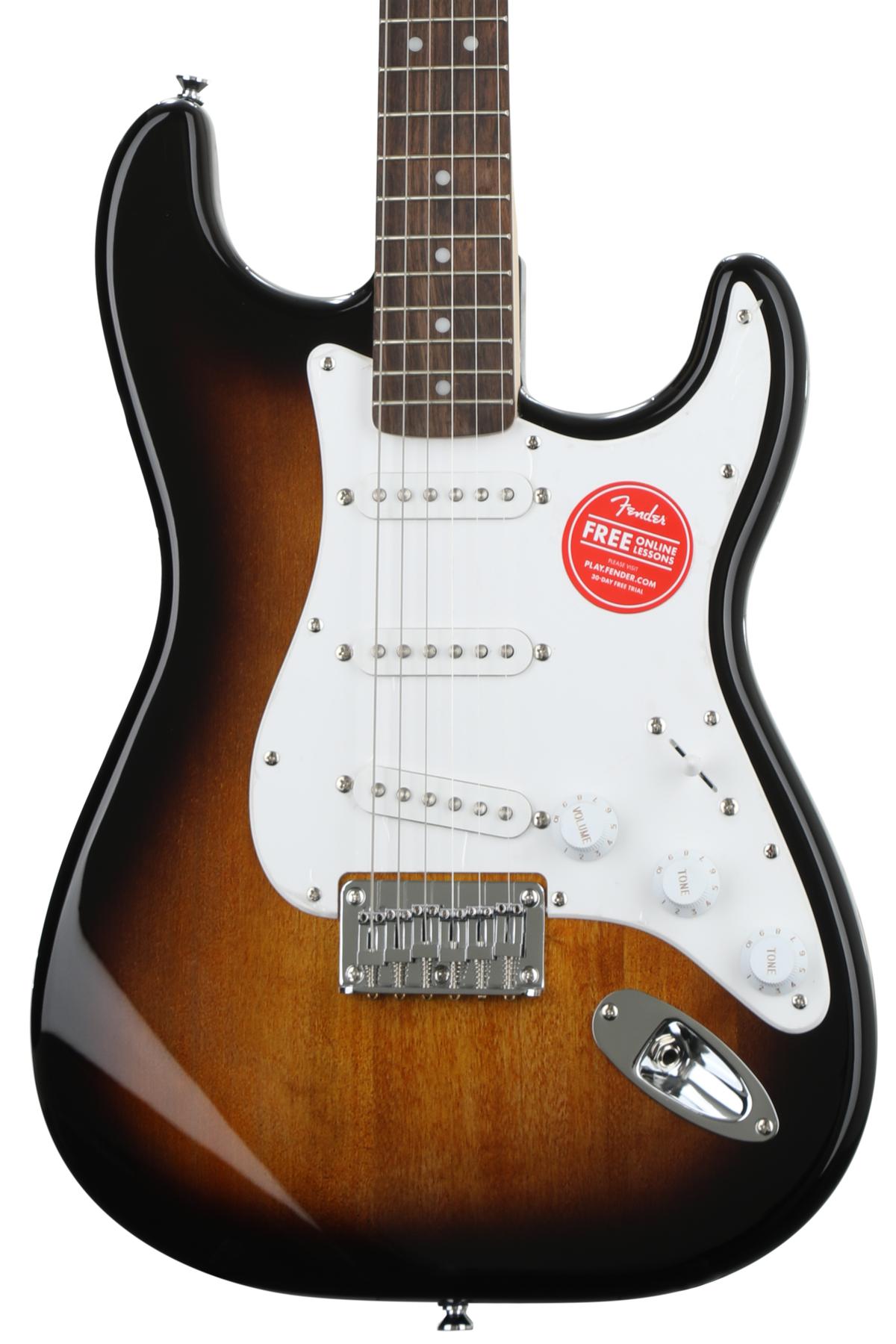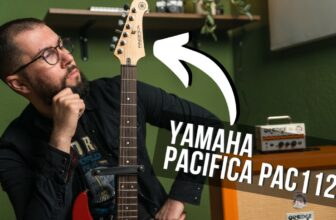Squier Affinity vs Bullet – Which is Better?

The most popular Squier series are Squier Affinity and Squier Bullet, with a variety of models that can be confusing for beginners. While both series are pretty similar and have several different models inspired by legendary Fender models, there are some subtle differences to consider.
Fender’s brother company, Squier, is one of the most popular names when it comes to beginner guitars. Fender’s little brother, Squier, produces fantastic entry-level guitars at affordable prices for musicians who want the Fender sound, quality, and feel without breaking the bank.
The Squier Affinity Series generally costs slightly more than the Bullet Series, as they have relatively better construction and higher-quality parts, which results in somewhat higher-quality sound and feel. However, the difference is subtle, and Squier Bullet Series also has great models to explore, especially for players who are on a strict tight budget.
Let’s dive deeper into these both budget-friendly series to see what models they offer and what these subtle differences are.
Contents
Models In Each Series
Affinity Series
- Squier Affinity Series Stratocaster
- Squier Affinity Series Stratocaster HH
- Squier Affinity Series Stratocaster FMT HSS
- Squier Affinity Series Telecaster
- Squier Affinity Series Telecaster Deluxe
- Squier Affinity Series Jazzmaster
- Squier Affinity Series Starcaster
- Squier Affinity Series Jaguar Bass H
- Squier Affinity Series Jazz Bass V
- Squier Affinity Series Precision Bass PJ
Squier Affinity Series has three different Stratocaster models, two Telecaster models, a Jazzmaster model, and a Starcaster model in the electric guitar range. There are also some bass guitars in the range, such as Squier Affinity Series Jaguar Bass H, Squier Affinity Series Jazz Bass V, and Squier Affinity Series Precision Bass PJ.
The standard Stratocaster model has three single pickups, while the Stratocaster HH model comes with a dual humbucker configuration. There is also the Stratocaster FMT HSS, which is the handsome member of the family with its flame maple top and humbucker, single-coil, single-coil pickup configuration.
The standard Telecaster model has the dual Squier single-coil Tele pickups, while the Deluxe model features Squier ceramic humbucking pickups with individual volume and tone controls along with bevels and contours for extra comfort.
Bullet Series
- Squier Bullet Stratocaster
- Squier Bullet Stratocaster HSS
- Squier Bullet Stratocaster HT
- Squier Bullet Stratocaster HT HSS
- Squier Bullet Telecaster
- Squier Bullet Mustang
The Bullet Series features four different Stratocasters with the Standard model featuring a triple single-coil configuration and the HSS model with the humbucker, single-coil, single-coil layout. There are also the HT versions of both models, which indicate that they have hardtail bridges. The remaining ones are the standard Telecaster and the standard Mustang models.
Key Differences Between Squier Affinity and Bullet
While both Squier Affinity and Squier Bullet Series offer great guitars for the price range, and their specs are pretty similar, there are subtle differences that make the Affinity guitars stand out.
The first thing to notice is that Squier Affinity guitars are slightly more expensive on average than the Bullet Series guitars. The reason behind this is the quality of construction and workmanship, as well as the quality of the components used on the guitar.
The Affinity guitars are slightly more durable than Bullet Series guitars as the components are slightly higher quality. Also, the sound of Affinity guitars is a bit better, mainly thanks to the better pickups.
Squier Affinity guitars are slightly heavier than Bullet guitars as the Bullet series are produced with Basswood bodies which are inferior quality and lighter compared to the poplar body of Affinity guitars. White poplar is a heavier wood, and it has better resonance and tone.
But, it must be noted that the standard Bullet Strat is an exception as it also has a poplar body just like the Affinity Series.
Another important difference is that the quality control and attention to detail are better with the Affinity Series guitars, as there may be imperfections with the finish and hardware on Bullet guitars. The quality of Bullet Series guitars is inconsistent compared to the Affinity Series.
The specs are pretty similar in both series, and the differences mentioned here are quite subtle. While the Affinity Series is one step ahead, the guitars are pretty similar.
The Affinity Series has more models and options for different configurations for Stratocasters and Telecasters. Affinity Series also has a semi-hollow body option, the Affinity Starcaster, along with different bass guitar models. On the other hand, the Bullet choices are limited and only feature the essential model, including different Strats, as well as a Tele and a Mustang.
Sound Comparison
The sound quality of electric guitars heavily depends on three factors; the quality of the pickups, the body wood, and the amp used. Even if you have a top-quality Fender Stratocaster, it won’t sound good without a good amp.
That being said, the Affinity Series sound slightly better than the Bullet Series guitars. This is because mainly the pickups used on Affinity Series are better. The Affinity Strats, for instance, come equipped with ceramic single-coils or ceramic humbuckers, while the Bullet Series features standard single coils or standard humbuckers.
The ceramic pickups sound better compared to standard ones, and they have more warmth and clarity. The electronic pursuit is slightly better with the Affinity Series, making the guitar sound a bit more twangy and have slightly more tonal versatility.
Another critical point is that Affinity Series have poplar wood bodies, while Bullet Series has basswood bodies. Poplar is a heavier wood and has better resonance, which gives a warmer sound and more sustain to Affinity guitars compared to the Bullet ones. However, the difference is only minor, as is the price difference.
Feel Comparison
While both guitars feel quite good, especially for beginner players, the Affinity feels slightly better in hand. This is due to the better workmanship on the guitar, as the Affinity Series has a better and smoother feeling fingerboard.
I can say that Affinity’s neck is excellent for beginners, but experienced players would also find it quite playable. The C-shaped neck has laurel and maple fingerboard options with a gloss neck finish. On all models, the neck feels quite good.
On the other hand, Bullet only has Indian Laurel fingerboards with C-shaped necks. But, for example, the C-shaped neck on the Strat feels a bit chunkier on the Bullet, and there are some scratchiness and rough edges on the frets, decreasing the playability of the guitar.
The finish on the neck is slightly better on the Affinity guitars. The shapes of the guitars are almost identical, but Affinity has a larger headstock. The basswood body of the Bullet Series makes them slightly lighter than Affinity, which is better for smaller players.
Durability Comparison
As Affinity guitars have better components, construction, and quality control, the durability of the Affinity series is better. Overall, they feel more durable, better-made, and more refined compared to their cousin models from the Bullet Series.
Affinity guitars have decent quality materials and feel playable out of the box. However, the Bullet guitars are more inconsistent overall and sometimes come with neck imperfections that need adjustments. Also, the knobs, tuners, and electronics can be flimsier and stiffer from time to time compared to Affinity models.
Overall, the differences are subtle and Bullet is also a great guitar for the price.
Electronics Comparison
As I mentioned in the previous section, the electronic controls feel slightly better on the Affinity models. The knobs and the switches feel more solid on Affinity models. The Bullet’s controls feel a bit cheaper, but the controls work fine on both models.
Extra Features Comparison
The rest of the features are pretty similar. The Affinity guitars have sealed die-cast hardware, while the Bullet has standard die-cast hardware.
Depending on the model, the bridge types are also different. The Bullet Strats have a hardtail option, while Affinity Strats all come with 2-Point Synchronized Tremolo with Block Saddles. The standard Bullet Strat features a 6-Saddle Vintage-Style Synchronized Tremolo.
The Affinity Telecaster comes with a 6-Saddle String-thru Body and the Bullet Tele with a 6-Saddle Hardtail bridge. The Affinity Jazzmaster features 2-Point Synchronized Tremolo with a Block Saddles bridge, while the Bullet Mustang has a 6-Saddle Hardtail again.
All the bridges feel good, and it comes to personal choice. If you want some tremolo action, I recommend going with the Affinity Strat, as it holds the tuning better than the other models.
Summary
The competition between the Affinity Series and the Bullet Series is a close one. Both guitars offer great value for their prices and are perfect choices to experience something close to the iconic Fender feel and sound.
As the prices of both series show, there are subtle differences between the models. Overall, Affinity guitars have better construction and higher quality materials which leads to better sound and feel.
The Bullet guitars are also great but have inconsistencies between the quality of individual guitars and have slightly lower-quality sound and feel compared to the Affinity ones.
But, if you are looking to upgrade some parts later, Bullet might be a good choice as it is slightly cheaper, and the main difference is the components used. On the other hand, Affinity can be a great choice if you want to learn to play with a slightly more comfortable and better-sounding instrument.







